TNCC Written Exam 2022(Questions with 100% Correct Answers)
Document Content and Description Below
What is the best measure of the adequacy of cellular perfusion and helps predict the outcome of resuscitation? - ANSWER Base deficit used in conjunction with serum lactate Will hypocapnia cause vas... oconstriction or vasodilation, especially in the cerebral vasculature? - ANSWER Vasoconstriction What results from tissue hypo perfusion and oxygen deficit? - ANSWER Metabolic acidosis What type of shock results in generalized vasodilation? - ANSWER Neurogenic shock Spinal cord injuries at C3-C5 causes loss of what nerves function, resulting in what? - ANSWER Phrenic nerve; paralyzed diaphragm and inability to breath Extremity elevation AT the level of the heart is beneficial for what type of injury? - ANSWER Compartment Syndrome What is a high risk of frostbite? - ANSWER Thrombus formation What two medications can be administered to maintain perfusion after a frostbite injury along with rewarming? - ANSWER Tissue plasminogen activator or non steroidal anti-inflammatory medication (NSAIDS) An rise in diastolic blood pressures is a sign of increasing what? - ANSWER Peripheral resistance What position will benefit the airway and work of breathing for the bariatric patient? - ANSWER Reverse Trendelenburg Which phase of a blast results from flying debris, projectiles, and bomb fragments causing lacerations or penetrating injuries? - ANSWER Secondary Phase What phase of a blast results from any explosion-related illness or injury including hyperglycemia, hypertension, angina, asthma, COPD, or sepsis? - ANSWER Quaternary Phase What phase of a blast results from individuals being thrown by the blast and impacting walls, ground, or any hard object? - ANSWER Tertiary Phase What phase of a blast results from impact of the over and under pressurization wave with body surfaces. Injuries include blast lung, tympanic membrane rupture, abdominal hemorrhage, globe rupture, and mild traumatic brain injury? - ANSWER Primary Phase Signs of what include muscle pain or weakness, dark red or brown urine, general weakness or malaise, and elevated creatinine kinase levels? - ANSWER Rhabdomyolosis Signs of what include anxiety, pleuritic chest pain, dyspnea, hypoxemia, hemoptysis, cough, orthopnea, adventitious lung sounds, decreased lung sounds, jugular vein distention, or hypotension? - ANSWER Pulmonary Embolus Signs of what include headache, nausea and vomiting, amnesia, behavioral changes, altered level of consciousness? - ANSWER Increased intracranial pressure Signs of what include asymmetric pupillary reactivity, unilateral dilation, widening pulse pressure, abnormal motor posturing, bradycardia, and decreased respiratory effort? - ANSWER Late signs of increased ICP with Herniation Syndrome What is caused by the tear of the bridging veins or middle meningeal artery? - ANSWER Subdural and Epidural Hematoma Affect concentration, memory, sleep, mode, and libido. Causes headaches, dizziness and nausea. - ANSWER Postconcussive Syndrome/ Mild Traumatic Brain Injury Signs and symptoms similar to early signs of increased ICP but do not worsen. - ANSWER Postconcussive Syndrome/ Mild Traumatic Brain Injury Cerebral Perfusion Pressure = ______-______ - ANSWER MAP - ICP What is the range for CO2 to maximize perfusion? - ANSWER 35-45 Does hypoventilation cause dilation or constriction? Increase or decrease ICP? - ANSWER Dilation and increase in ICP due to high CO2 Hyperventilation cause dilation or constriction? - ANSWER Constriction d/t low CO2 Pupils with pressure on cranial nerve - ANSWER Fixed and dilated Pupils with opiates vs stimulants - ANSWER small; large Pupils with anticholinergics such as atropine, ipratropium, and scopolamine - ANSWER large Sluggish reaction of pupils is an early sign of what? - ANSWER Increasing ICP Glasgow Coma Score with Mild, Moderate, and Severe TBI - ANSWER Mild = 13-15 Moderate = 9-12 Severe = 3-8 Goal value for ICP - ANSWER <15 Goal value for Cerebral Perfusion Pressure (CPP) - ANSWER >60 Le Fort Fracture - ANSWER Fracture of the maxilla What decrease ICP by decreasing cellular edema? - ANSWER Osmotic diuretics (such as 3% saline and mannitol) Becks Triad is a sign of what? And includes what three symptoms? - ANSWER Cardiac Tamponade; 1. Hypotension 2. JVD 3. Muffled heart sounds What is pulsus paradoxus? And what is it a sign of? - ANSWER Drop in blood pressure with inspiration, sign of cardiac tamponade Tachycarida, weak pulses, hypotension, cool periphery, delayed cap refill, anxiety and agitation are signs of what type of shock? Seen with what? - ANSWER Obstructive Shock; Cardiac Tamponade Persistent blood loss following chest tube insertion is a sign of what? - ANSWER Hemothorax Ipsilateral diminished breath sounds and chest movement is a sign of what? - ANSWER Hemothorax Tearing chest/back pain, unequal blood pressure and pulses are a sign of what? Caused by a high mechanism of injury. - ANSWER Thoracic Aortic Disruption Dysrhythmia, ischemic changes, and persistent unexplained tachycardia are signs of what? - ANSWER Myocardial contusion from Blunt Cardiac Injury Decreased/absent breath sounds ipsilaterally, JVD, hypotension, and tracheal deviation to the contralateral side (late sign) is seen with what? Can lead to what? - ANSWER Tension Pneumothorax; PEA Hemoptysis, ineffective cough, crackles in affected lung, hypoxia/hypercapnia, and alveolar opacities are signs of what? - ANSWER Pulmonary Contusion Paradoxical chest wall movement, bony crepitus, rib segment depressed with inhalation and elevated with exhalation are signs of what? - ANSWER Flail Chest (caused by chest wall injury) Open wound on chest wall resulting in sucking sound, decreased breath sounds, chest movement, and hyper-resonance ipsilaterally, subcutaneous emphysema, and tachycardia are signs of what? - ANSWER Open Pneumothorax Hear bowel sounds in chest and Kehr's sign seen with what? - ANSWER Traumatic Diaphragmatic Tear Referred pain down the left shoulder; indicative of a ruptured spleen. - ANSWER Kehr's Sign Diaphragmatic Tears are seen with what types of injuries? - ANSWER Penetrating injuries between T4-T12, or rapid deceleration causing severe blunt trauma to the torso. Incision with blood clot, edges approximated with suture closer, and results in a fine scar. This is __________ Intention. - ANSWER Primary Irregular large wound with blood clot, no closure, granulation tissue fills in the wound, results in large scar. This is ________ Intention. - ANSWER Secondary Contaminated wound, granulation tissue, delayed closure with suture. This is _______ Intention. - ANSWER Tertiary Soft, dry, red wound with intact skin that blanches with pressure. No blistering or sloughing. What degree burn? - ANSWER First degree; superficial Moist wound, weeping, red or pink edematous skin that blanches with pressure, some blisters. What degree burn? - ANSWER Second degree; superficial partial thickness Wet, waxy, red to pale skin that does not blanch, multiple sisters. What degree burn? - ANSWER Second degree; deep partial thickness Waxy white to leathery gray to charred skin that is dry and firm with absent hair, no blanching. What degree burn? - ANSWER Third degree; full thickness Burn extends into the fascia and/or muscle. What degree burn? - ANSWER Fourth degree; full thickness Zones of burn injury (3) - ANSWER Zone of coagulation Zone of stasis Zone of hyperemia What syndrome occurs most often in burns greater than 20% BSA and lasts for approximately 6-12 hours? - ANSWER Capillary Leak Syndrome Fluid replacement goals/calculation - ANSWER 2mL/kg LR x TBSA% (give 1/2 over first 8 hours (minus transport time) and 1/2 over next 16 hours) Urine Output goals for fluid replacement therapy - ANSWER 0.5 mL/kg (30-50mL/hr) Disaster Definition - ANSWER A sudden calamitous event that seriously disrupts the functioning of a community or society and causes human, material, and economic losses that exceed the community's or society's ability to cope using its own resources. Mitigation - ANSWER A foundation to limit the potential impact of a disaster Triage colors and meanings: - ANSWER Green - minor, walking wounded Yellow - delayed Red - immediate Black - expectant, deceased When should the decision to transfer be made? - ANSWER When the patient's needs outweigh the capabilities of your facility Tertiary care facility, teaching hospital, comprehensive care from resuscitation or rehabilitation, research, injury prevention. - ANSWER Level 1 Trauma Center Trauma rescucitation and definitive trauma care. Specialty and rehabilitation care may not be as comprehensive, may not conduct research. - ANSWER Level 2 Trauma Center Provides ATLS assessment, intervention, resuscitation and emergency surgery. Generally does not accept transfers. - ANSWER Level 3 Trauma Center Provides ATLS assessment, intervention, and resuscitation. May be in a remote area, has 24 hour physician and NP coverage. - ANSWER Level 4 Trauma Center Greatest risk to the patient during interfaculty transfer/transport? - ANSWER Loss of airway and respiratory compromise What survey is a complete exam within 24 hours of arrival and identified injuries missed during primary assessment, reviews radiology studies, orders more studies, and assesses for hidden injuries? - ANSWER Tertiary Survey Stages of shock - ANSWER 1. Compensatory Shock 2. Decompensatory Shock (progressive, hypotensive) 3. Irreversible Shock Anxiety, confusion, restlessness, narrowing pulse pressure, tachycardia, bounding pulse, and decreasing urinary output are signs of what? - ANSWER Compensated Shock Decreased level of consciousness, hypotension, narrowed pulse pressure, tachycardia with weak pulse, tachypnea, and cool, clammy, cyanotic skin are signs of what? - ANSWER Decompensated/Progressive shock Obtunded/comatose, profound hypotension, bradycardia, dysrhythmias, slow shallow respirations, petechiae/purpura are signs of what? - ANSWER Irreversible shock Benefits of the trauma nursing process - ANSWER Systematic approach to the evaluation of each trauma patient. Identifies life-threatening conditions, determines priorities of care. Efficient production of ATP, which maintains cellular metabolic function, is seen with what type of metabolism? - ANSWER Aerobic metabolism Inefficient production of ATP, byproduct is lactic acid, leads to metabolic acidosis, cellular dysfunction leads to cell death with what type of metabolism? - ANSWER Anaerobic metabolism The cellular process in which oxygen is used to metabolize glucose. Energy is produced in an efficient manner with minimal waste products. - ANSWER Aerobic metabolism The cellular process in which glucose is metabolized into energy without oxygen. Energy is produced in an inefficient manner with many waste products. - ANSWER Anaerobic metabolism What is included in the Trauma Triad of Death? - ANSWER Coagulopathy Acidosis Hypothermia Pump failure, caused by blunt cardiac injury, dysrhythmias, or myocardial infarction is what type of shock? - ANSWER Cardiogenic Shock What type of shock is caused by cardiac tamponade or tension pneumothorax? Ventricular failure is seen. - ANSWER Obstructive Shock Reservoir depletion and hemorrhage cause which type of shock? - ANSWER Hypovolemic Shock Vasodilation, anaphylaxis, sepsis, and spinal cord injuries cause which type of shock? - ANSWER Distributive Shock Options for hemorrhage - ANSWER Pressure at site, tourniquet, hemostatic dressings, Massive Transfusion Protocol, Tranexamic Acid (clotting promoter) Treatment for cariogenic shock - ANSWER inotropic support, anti-dysrhythmic medications, treat myocardial infarction or other underlying cause Treatment for obstructive shock - ANSWER pericardiocentesis, cardiac window, needle decompression, position pregnant patient on L side Treatment for distributive shock - ANSWER Support ventilations, vasopressors, pain management, apply warming methods Treatment for hypovolemic shock - ANSWER Tourniquet, 1:1:1 blood products, massive transfusion protocol, TXA, surgical repair Subdural hematoma is caused by tearing of the ______ veins and symptoms usually present within ____ hours of the accident. - ANSWER Bridging; 72 Epidural hematoma is caused by an arterial or venous bleed? Sx are transient LOC followed by a lucid period. - ANSWER Arterial Hyperventilation causes cerebral blood vessels to do what? - ANSWER Constrict [Show More]
Last updated: 1 year ago
Preview 1 out of 8 pages
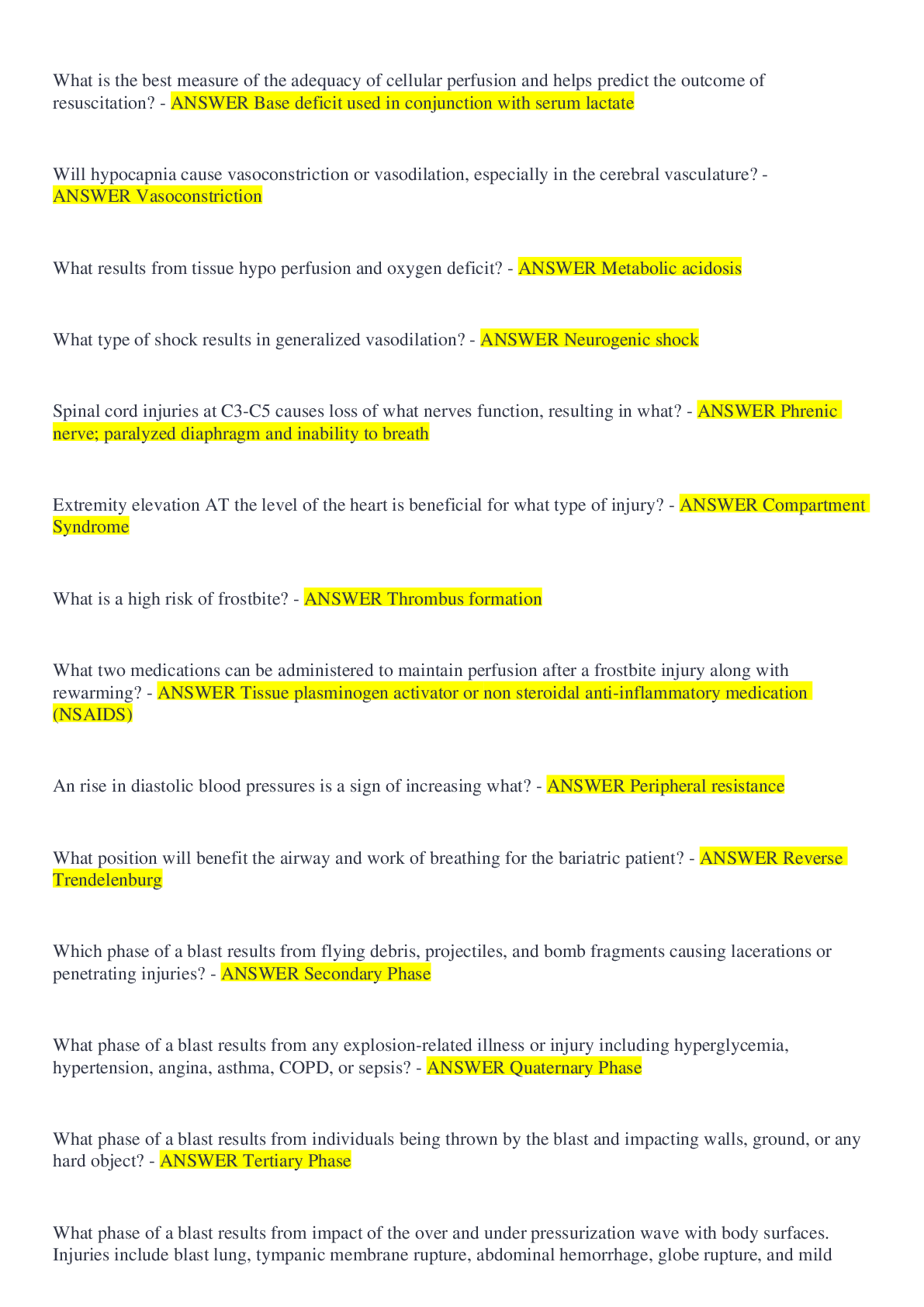
Reviews( 0 )
Document information
Connected school, study & course
About the document
Uploaded On
Jul 12, 2022
Number of pages
8
Written in
Additional information
This document has been written for:
Uploaded
Jul 12, 2022
Downloads
0
Views
35

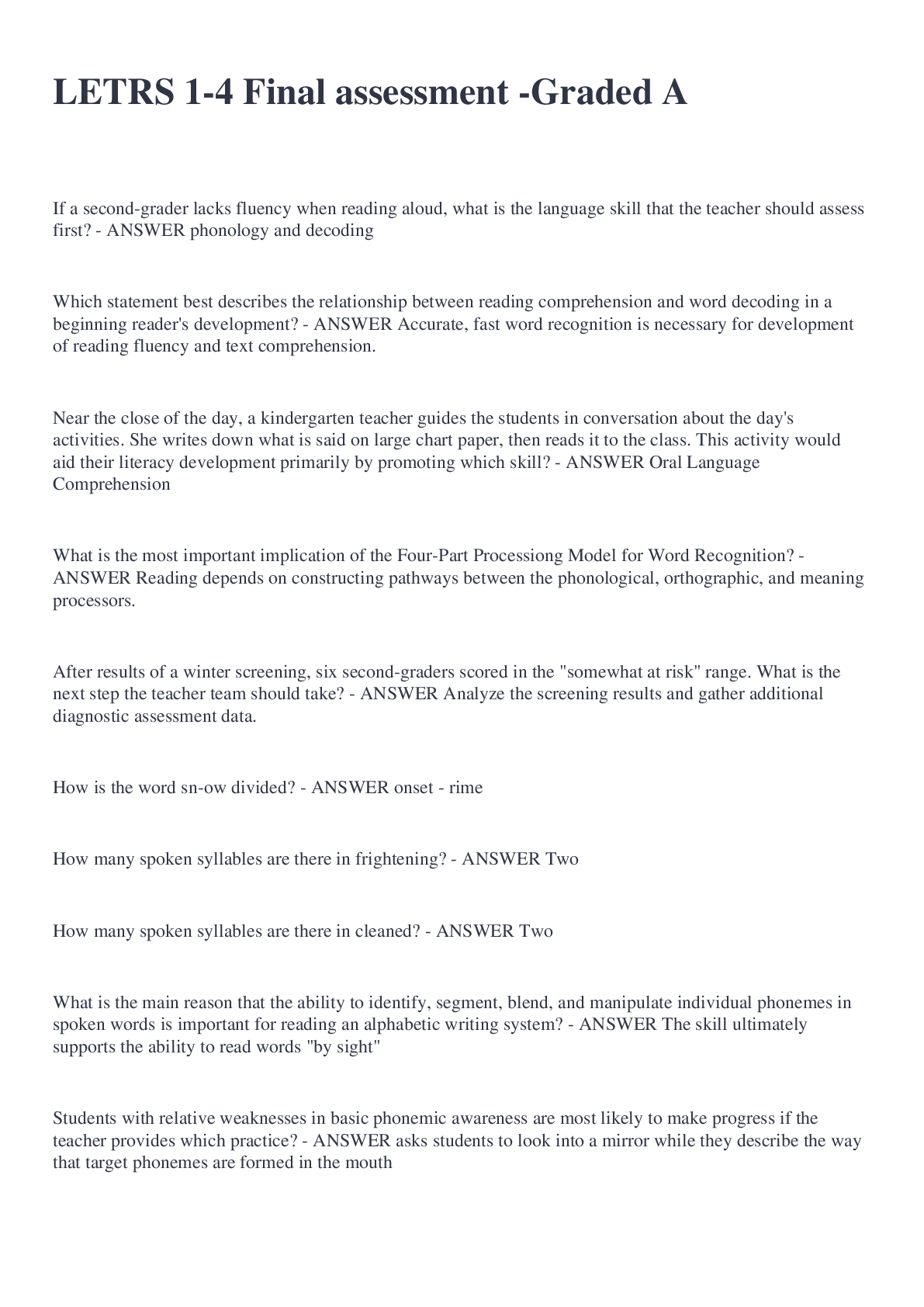





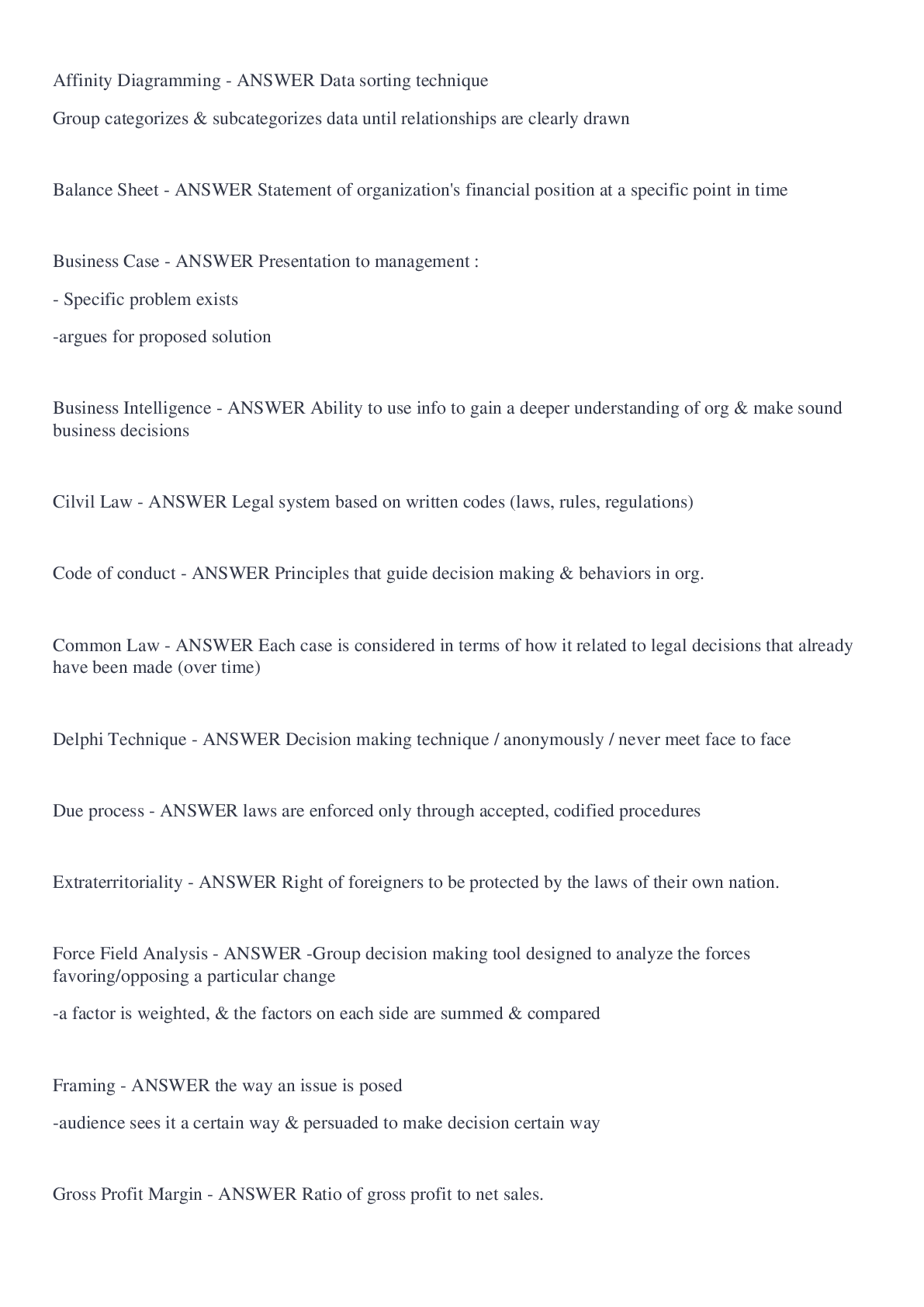

.png)
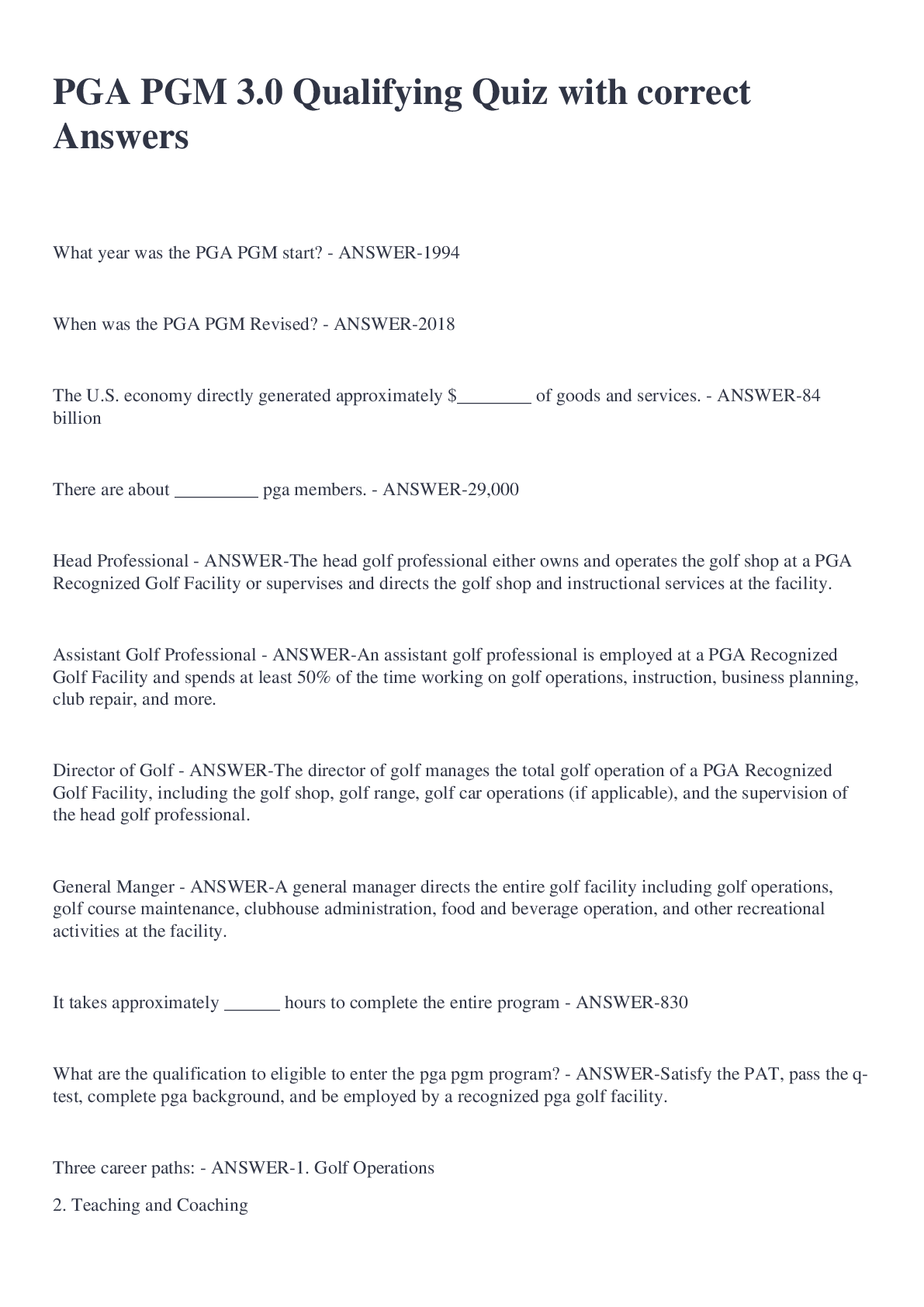
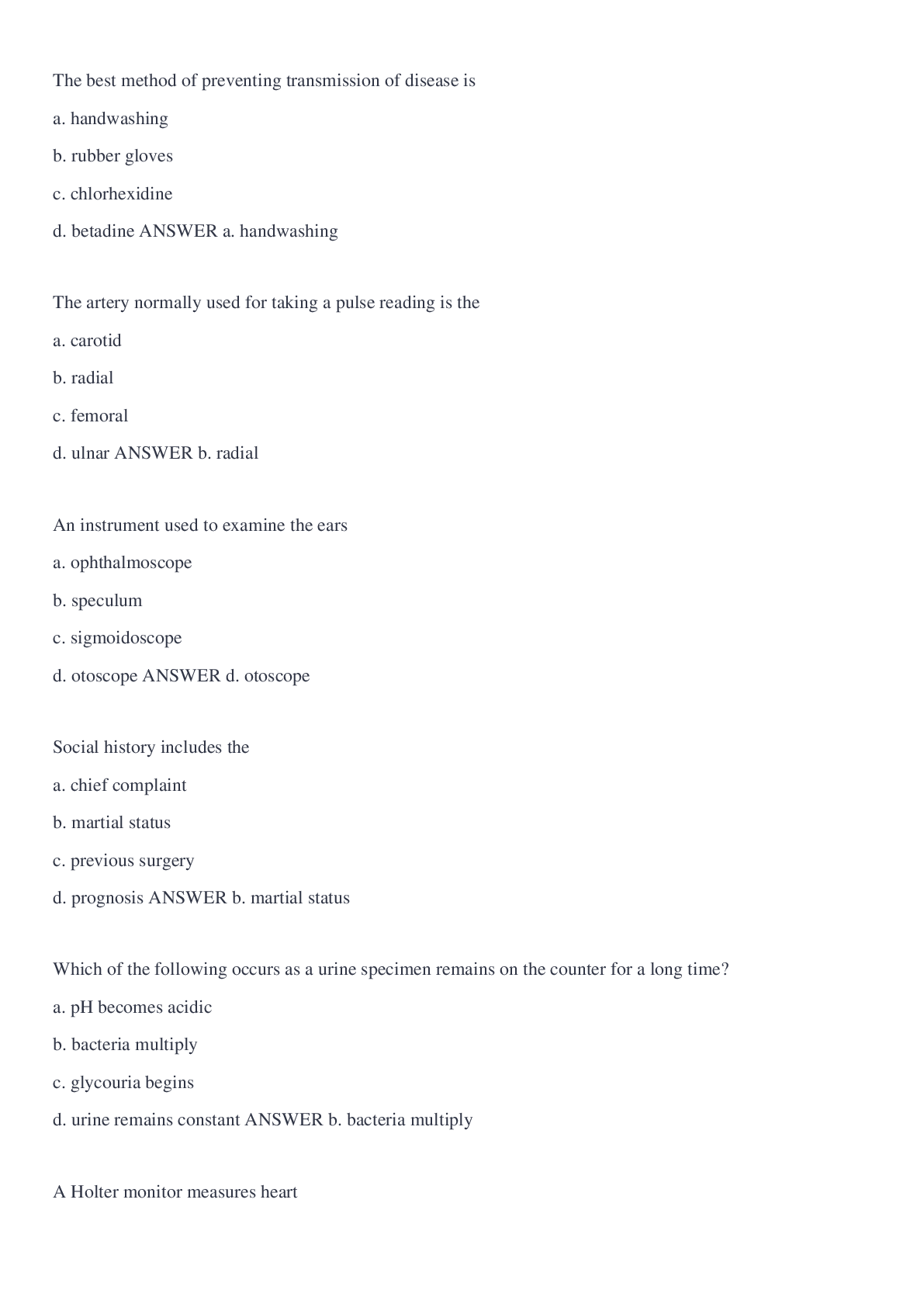

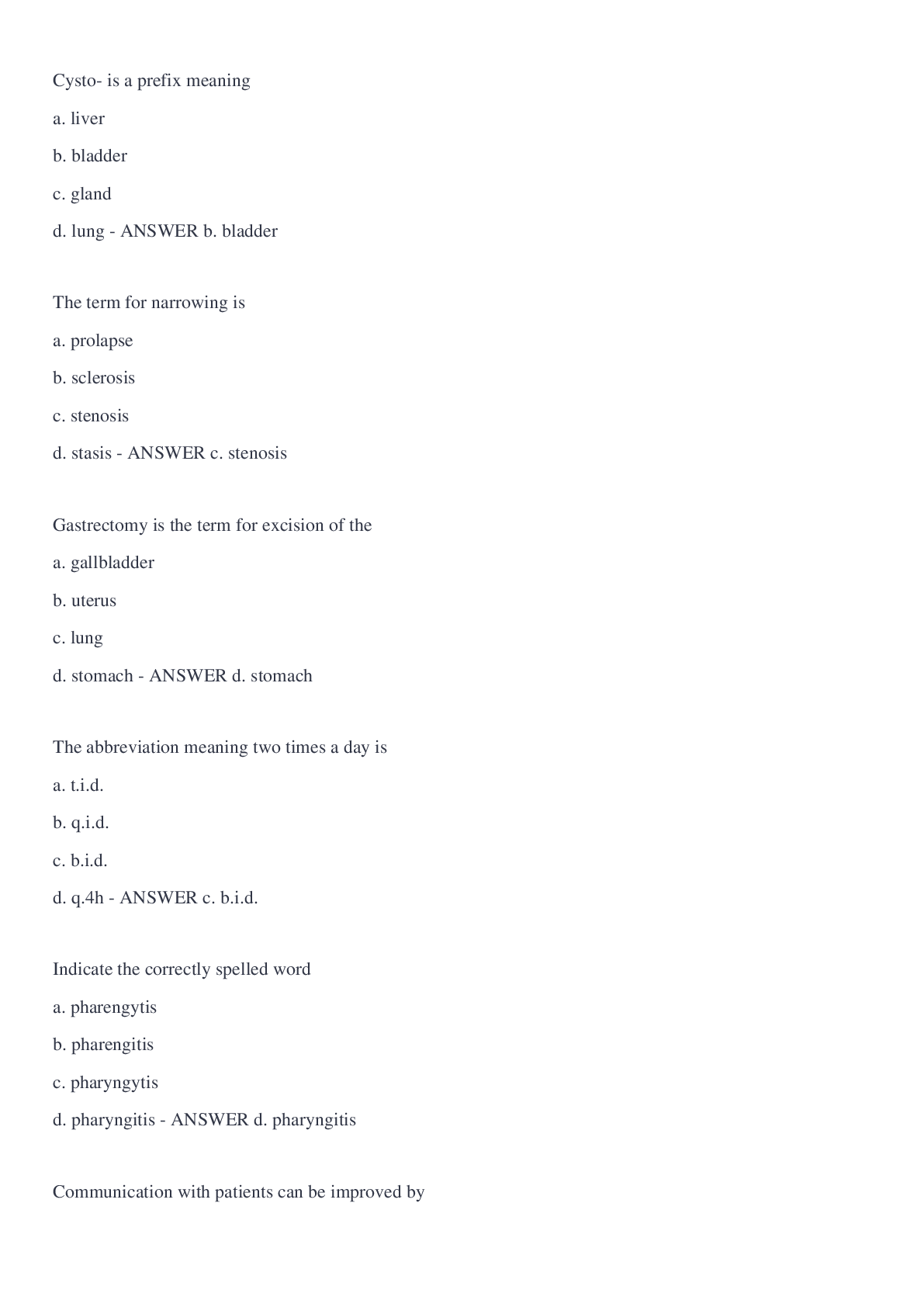





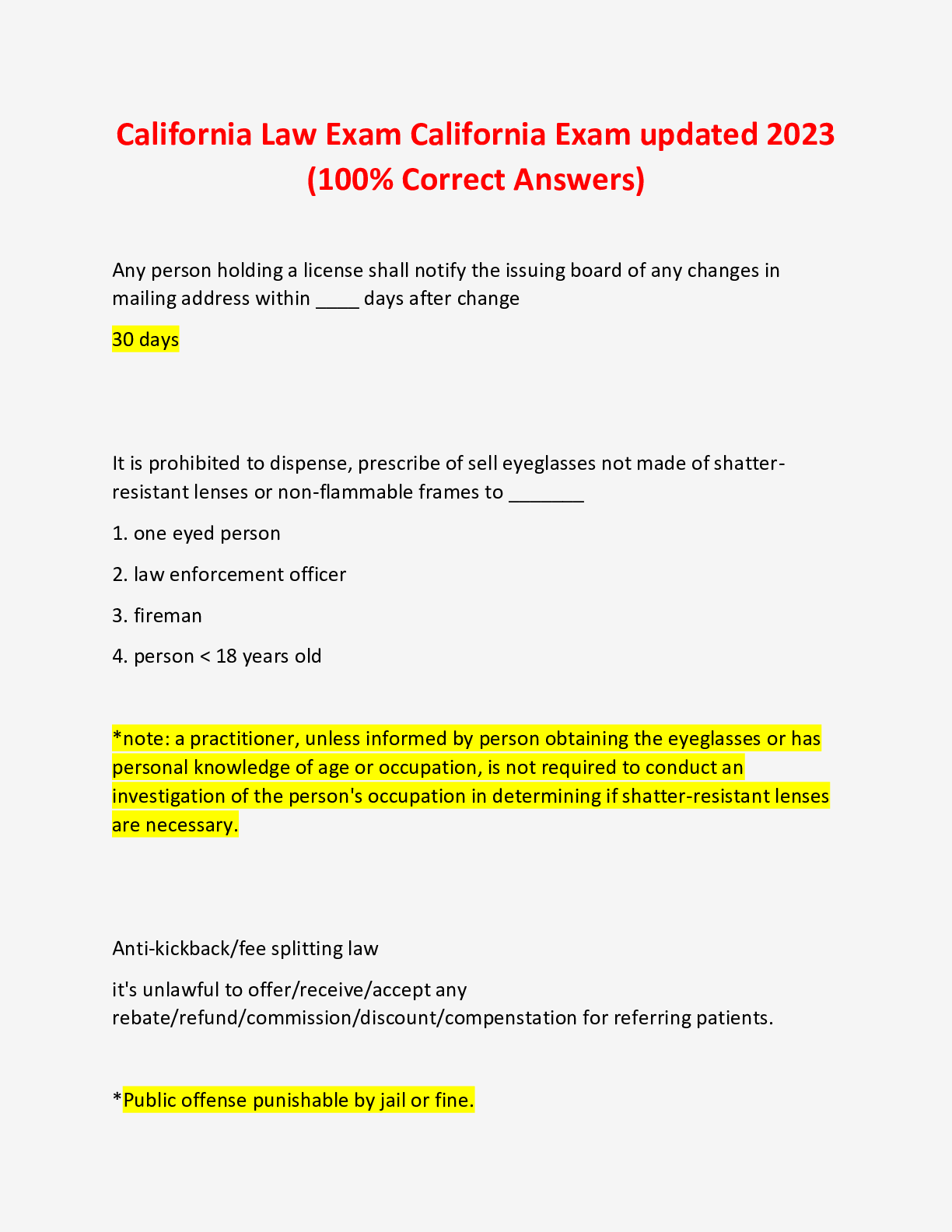
.png)
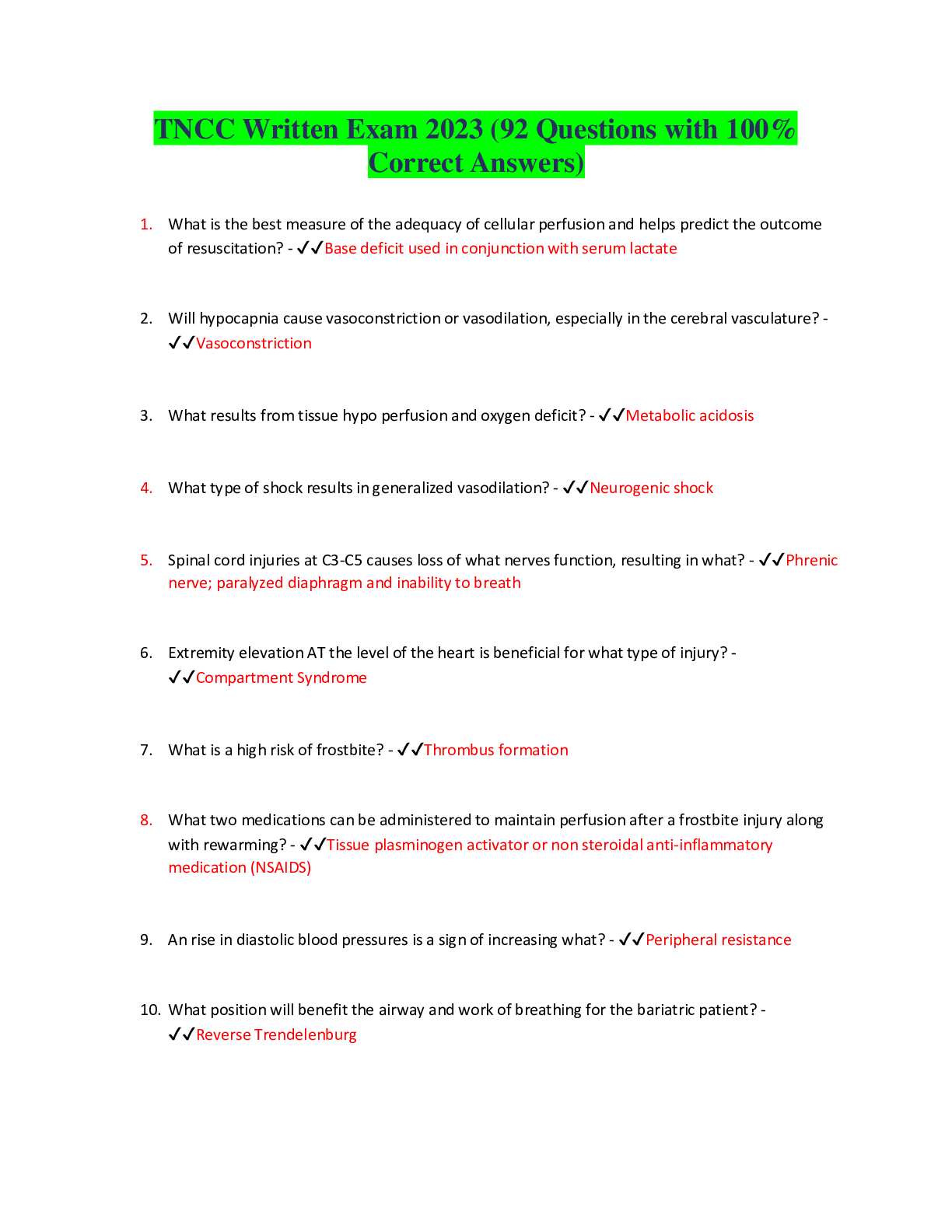
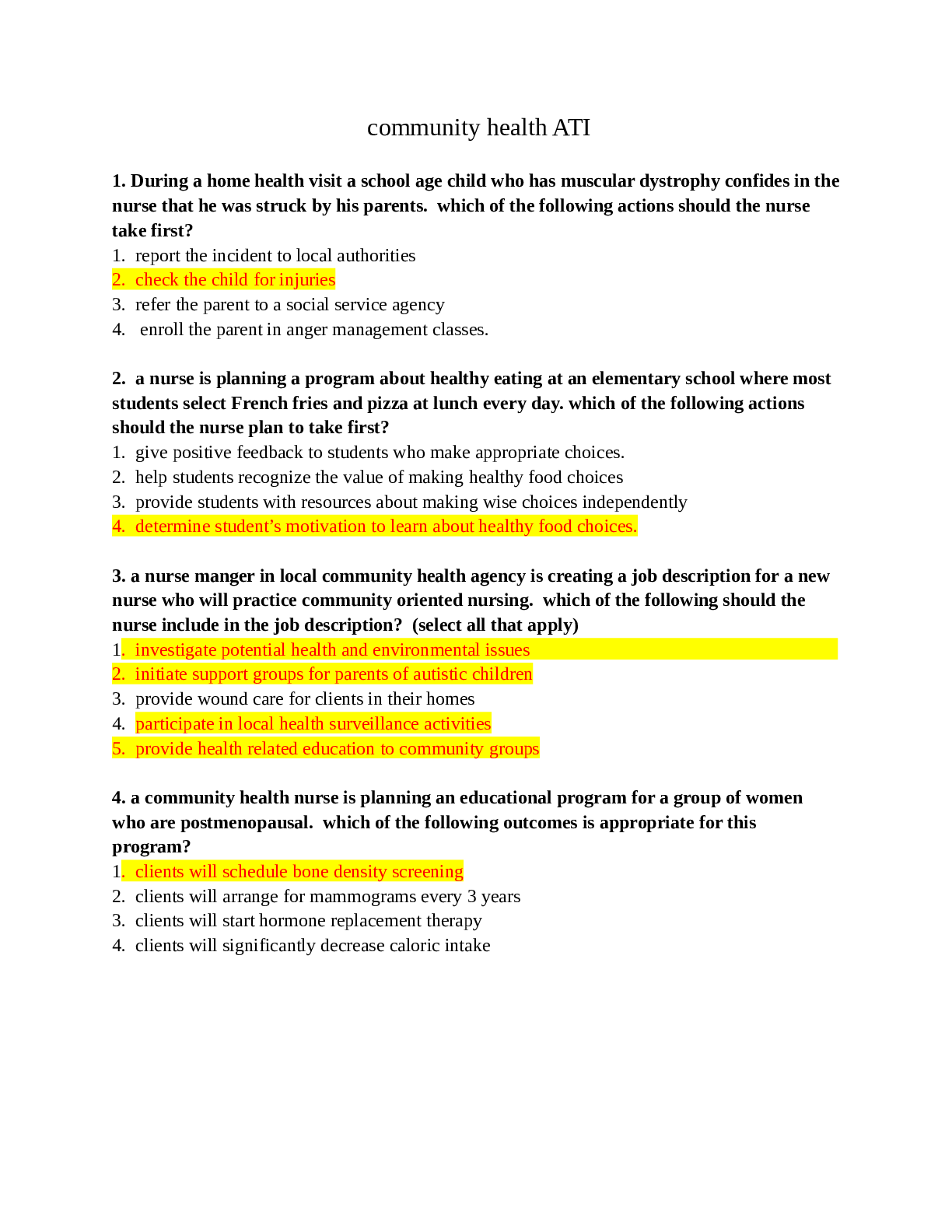

.png)
.png)
.png)
.png)
.png)
.png)
.png)
.png)
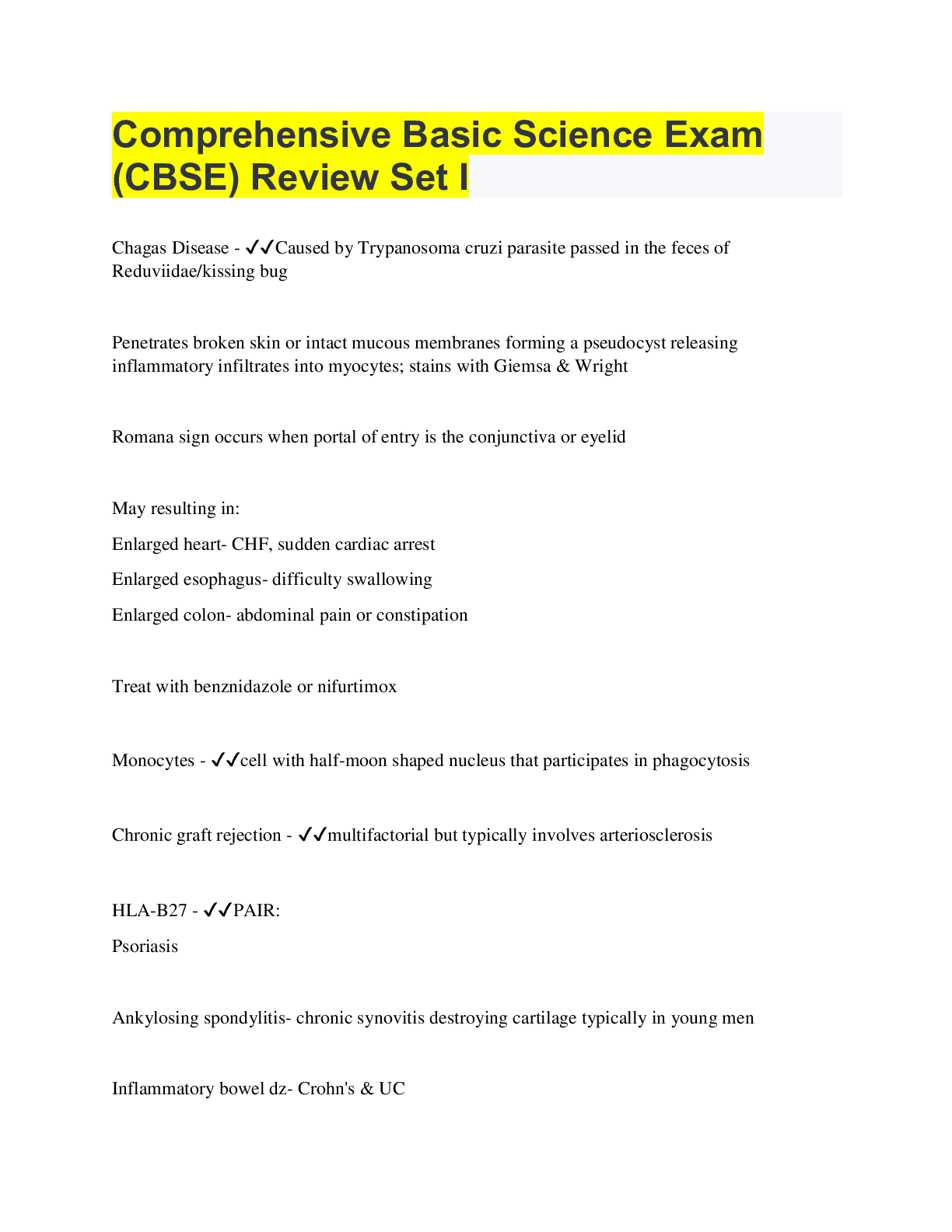
.png)
.png)
.png)

